
FCBarcelona
.pdf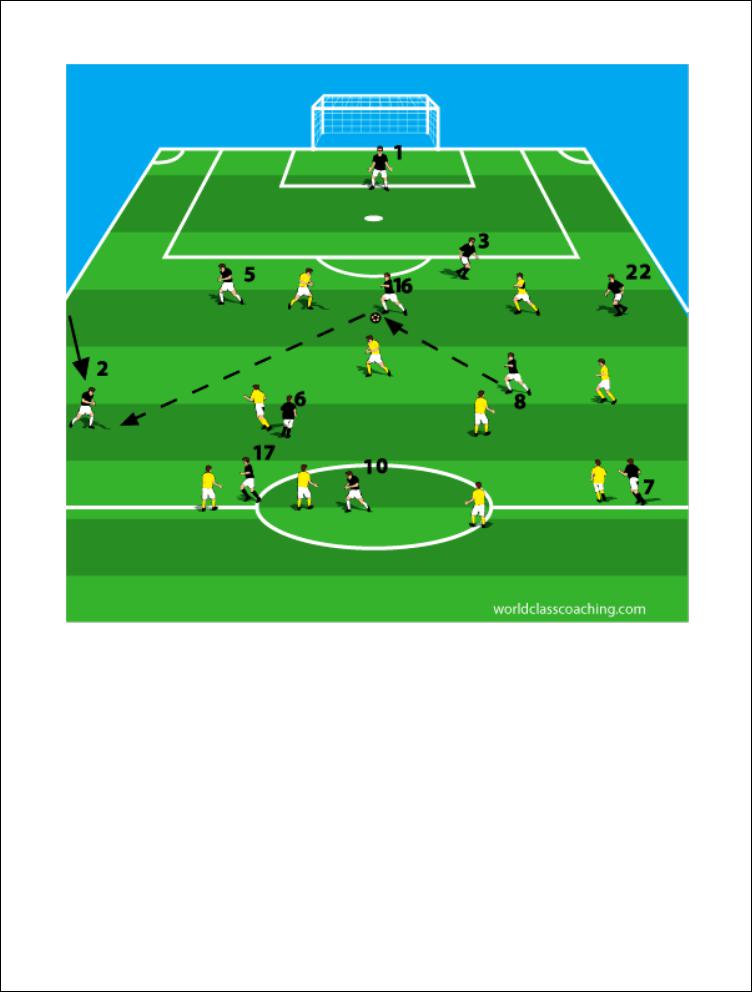
Change of field; outside back played into space
This move is a staple of Barcelona’s transition and attacking. Iniesta (8), seeing a condensed opposing midfield, plays Busquets (16), who plays an early ball into space for Alves (2) to run onto. Note that Pedro (17) has tucked in to condense the opposing back line as well.
©WORLD CLASS COACHING |
Page | 30 |
FC Barcelona – Style and Domination |
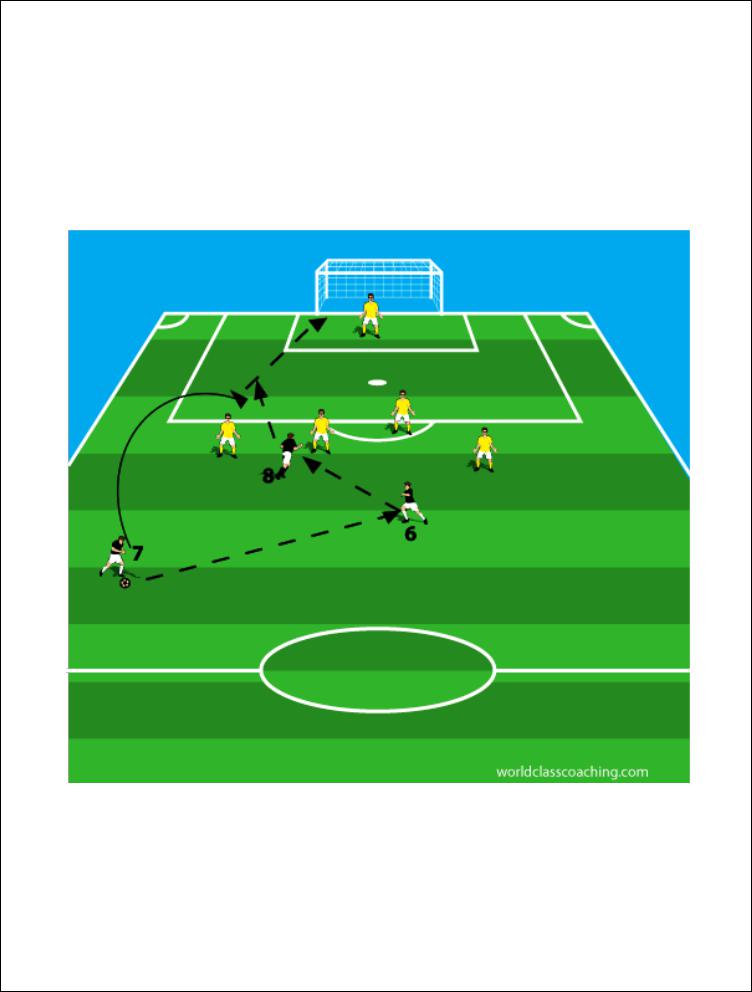
The Front Third: Barcelona Highlights 2011-2012
Barcelona scored a plethora of impressive goals from a wide variety of moves in the 2011-2012 season. The following highlights are presented as a sampling of those tallies, emphasizing the variety and also the common threads in their scoring. The goals (and a few near-misses) are presented in two broad categories: Goals from flank service and goals from central service.
Goals From Flank Service
Villa Goal vs. Villareal (3-1) (La Liga)
Goals from flank service for Barcelona are a direct result of their obsession with central possession. As opponents pile numbers into the center to disrupt Barca’s possession, wing players find more room to serve from the flanks. Here, David Villa (7) worked hard to check back into the midfield and win the ball. He passed into Xavi’s (6) feet and began a long overlapping run. Xavi found his attacking midfield partner Iniesta (8) in front of the defense.
©WORLD CLASS COACHING |
Page | 31 |
FC Barcelona – Style and Domination |
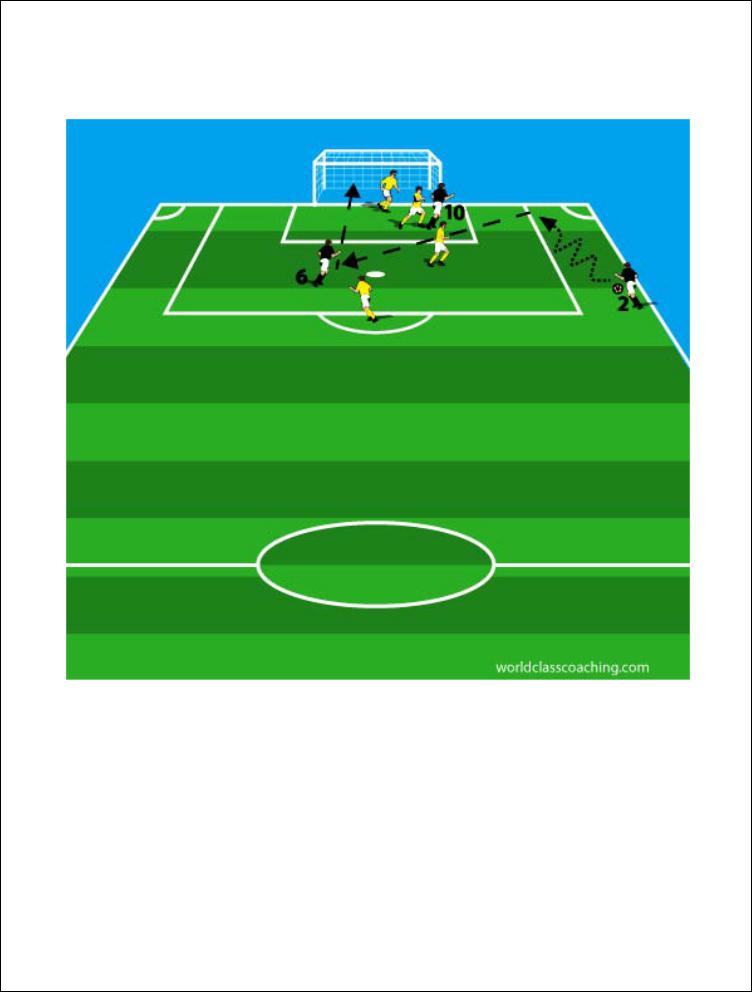
Iniesta placed a perfectly-paced pass behind the defense for an onrushing Villa, whose deft chip beat the goalkeeper for Barcelona’s first goal.
Xavi Goal vs. Santos (4-0) (FIFA Club World Cup Final)
Alves penetrated deep on the flank and Messi(10) makes an early run to the near post, drawing the Santos defense. Xavi (6) arrives late and is unmarked for an easy finish of Alves’ cross. This slide shows the focus that teams have to pay to Messi’s attacking runs, leaving lots of room for other players to attack and finish.
©WORLD CLASS COACHING |
Page | 32 |
FC Barcelona – Style and Domination |
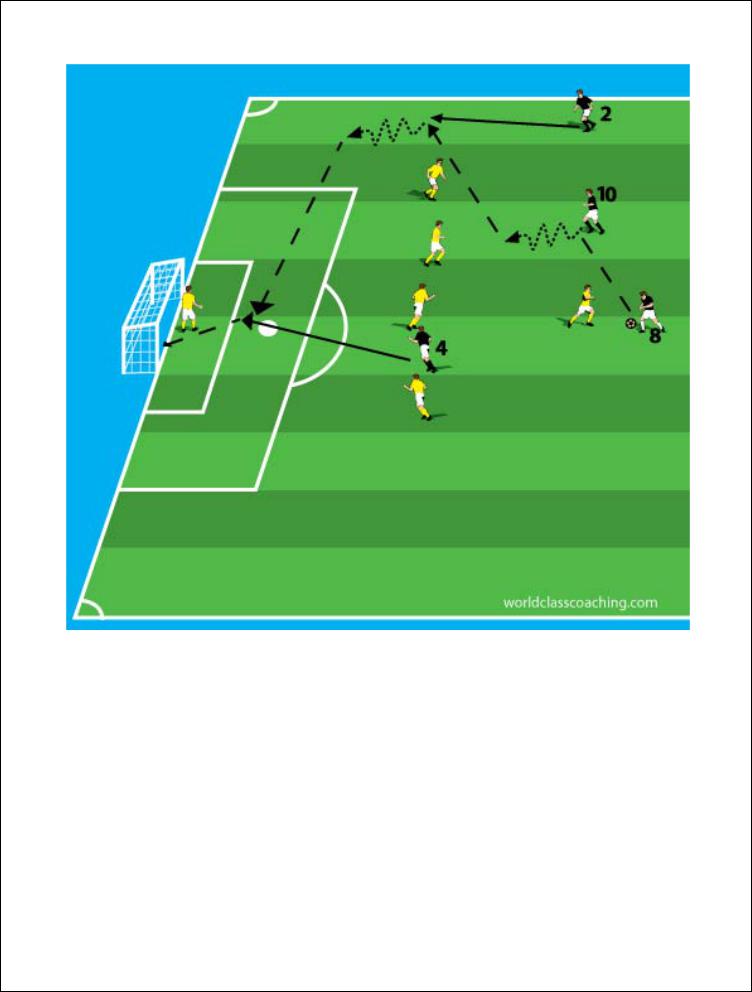
Fabregas Goal vs. Real Madrid (3-1) (La Liga)
Iniesta (8) passed to Messi (10) who ran at and condensed the Real back line. Alves (2) sprinted up the flank into exposed space, where Messi found him with a through pass. Alves continued end line before crossing to Fabregas (4) whose glancing header found the net for Barcelona’s third goal of the night.
©WORLD CLASS COACHING |
Page | 33 |
FC Barcelona – Style and Domination |
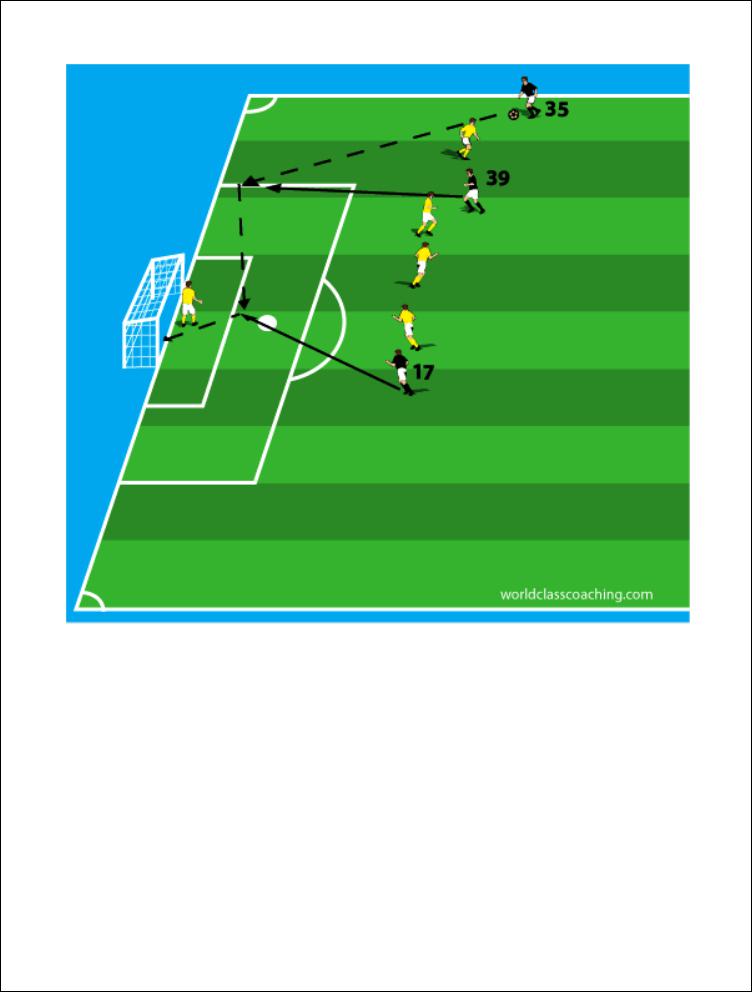
Pedro Goal vs. BATE (4-0)(UEFA Champions League)
This goal is a reflection of both the depth of the Barcelona team and also the individual flare that, while secondary to team play, is still a prominent and impressive part of enjoying watching Barcelona play. Seldom-used right back Montoya (35) stretched the defense with an overlapping run. Reserve forward Cuenca (39) made a well-timed run end line and got on the end of the through ball from Montoya. Cuenca’s cross found the feet of Pedro (17), who back-heeled the ball into the net for Barcelona’s third goal on the day.
©WORLD CLASS COACHING |
Page | 34 |
FC Barcelona – Style and Domination |
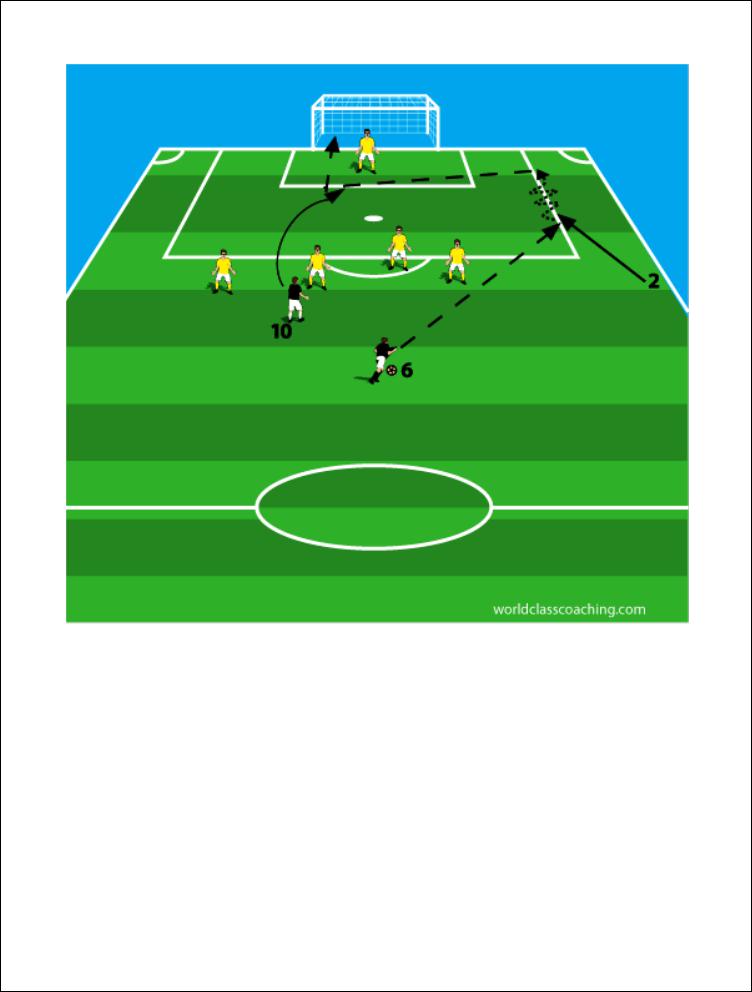
Messi Goal (1)vs. Osasuna (8-0) (La Liga)
After a series of passes in the middle had pulled in the Osasuna midfield and back lines, Xavi (6) played a driven pass to Alves (2), who had waited on the flank for the moment to get in behind. Alves used a settling header to control Xavi’s pass before dribbling end line. Alves’ cross found and onrushing Messi(10), who tapped in to open the scoring in what would ultimately be an 8-0 Barcelona rout.
Lionel Messi: The 2011 Golden Ball winner (also earned the award in 2009 and 2010) scored 61 goals in 71 matches for FC Barcelona and Argentina. He is the most recognizable face at Barcelona, and his signature dribbling runs through packed defenses are often breathtaking to observe. Messi’s story is even more impressive when one contemplates his road to the top of the soccer world. Born in Argentina, Messi was so small as a boy that the family sought hormone treatments (which it could not afford) to help Lionel reach a healthier height as an adult. Interestingly, no Argentinian soccer club would sponsor the boy, but Barcelona offered to support him so the family moved to Spain and Lionel was schooled and socialized at La Masia,
©WORLD CLASS COACHING |
Page | 35 |
FC Barcelona – Style and Domination |

the famed Barcelona boarding school. Locals note that even today Messi frequents the school, and he is certainly a stunning example of what care and confidence can do for a child. The boy grew a bit and he developed an uncanny ability to dribble in tight space. His low center of gravity, ironically, allows him to change directions on the fly much more quickly than his taller opponents, and he never seems to be out of control on the dribble. He is also one of the most casual, comfortable finishers in the game.
‘He (Messi) feels the ball. That’s what makes him different.’ – Diego Maradona
Today, Messi is not only the most dangerous dribbling threat on the planet, but also a major reason why Barcelona create so many marking problems for opponents. When Messi (in his ‘false nine’ role) checks into the midfield, he often drags a member of the opposing defense with him, and runs by the attacking midfielders into the space vacated by Messi are therefore more effective. Similarly, when Messi makes a run off of the ball into the area, he dominates the opposing center backs’ attention, freeing room for secondary runners to arrive and finish. Finally, when Messi dribbles, the likes of Fabregas, Villa, Iniesta, Xavi, Alves, Pedro and others find more space to play off of him because the defense closes on the dribbler, knowing that he alone may break down the defense. Thus, Messi’s presence and talent have a multiplying effect regarding Barcelona’s tactical efficiency and also improve the odds that his teammates will find more room to play.
©WORLD CLASS COACHING |
Page | 36 |
FC Barcelona – Style and Domination |
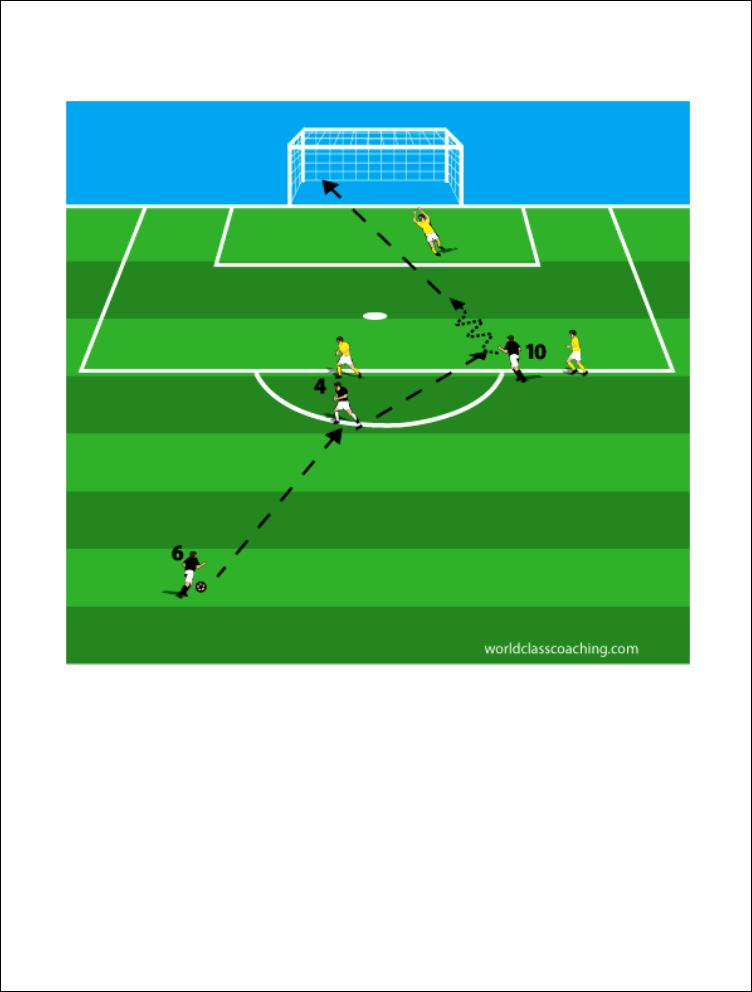
Goals and Chances From Central Attacking
Messi Goal vs. Osasuna (2) (8-0) (La Liga)
This move started with pressure and a turnover in the midfield, as Xavi (6) won the ball and played sharply into the feet of Fabregas (4) as the latter checked. Cesc’s awareness and sharp footwork allowed him to turn the ball sharply away and play a perfect ball into the area for Messi to run onto and finish.
©WORLD CLASS COACHING |
Page | 37 |
FC Barcelona – Style and Domination |
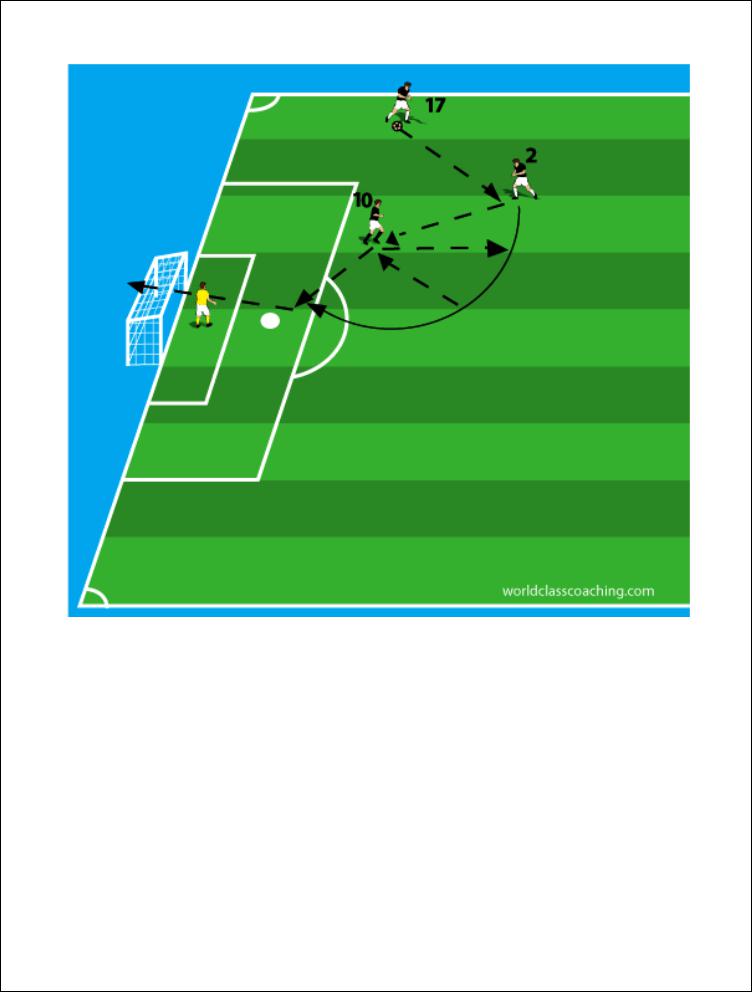
Alves Near Miss vs. Viktoria Plzen (3-0) (Champions League)
Barcelona have an impressive ability to string together 1 and 2-touch passing under immense pressure in crowded midfield areas. Pedro (17) ran the ball to the touchline before cutting it back to an on-running Alves (2), who had tucked inside. Alves played a pair of 1-2’s with Messi (10), forcing the defense to collapse on the latter’s position. Messi’s final pass put Alves in, where he pushed the ball over the bar. This near miss is a classic example of Barcelona’s design to stretch the width of the opposing back line and then shred that line with quick combination play featuring 1-touch play and hard running off of the ball.
©WORLD CLASS COACHING |
Page | 38 |
FC Barcelona – Style and Domination |
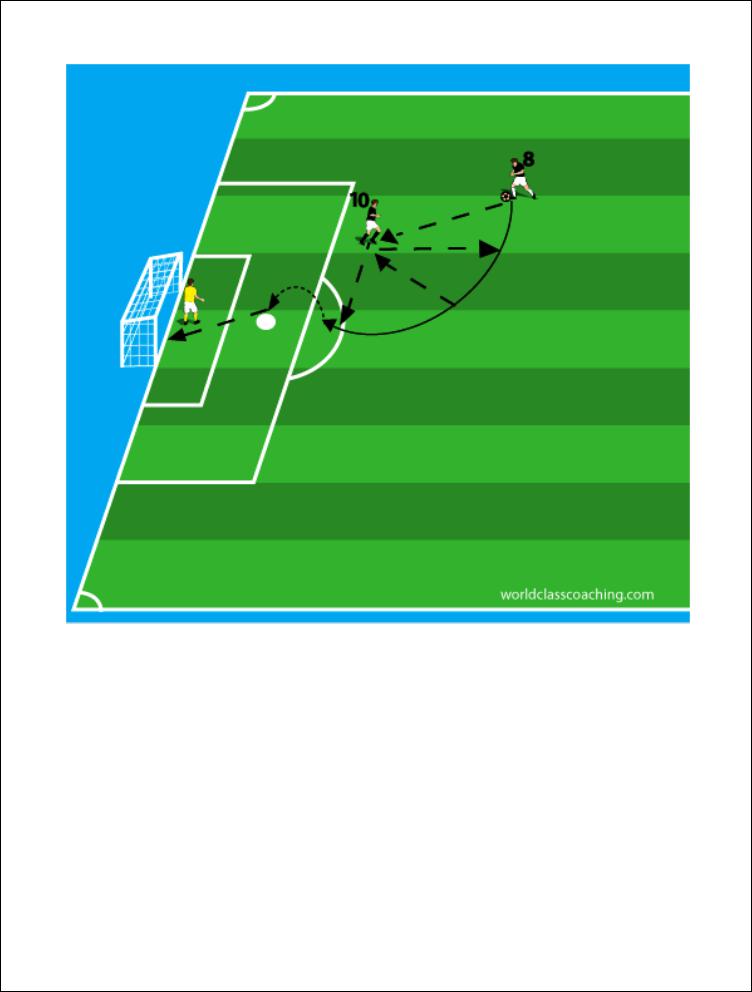
Iniesta Goal vs. Viktoria Pilzen (3-0) Champions League
After a lengthy buildup in the middle third, Iniesta (8) played into the feet of Messi (10) who was checking to the ball near the top of the area. Messi returned the ball in stride to Iniesta. The two then completed a second 1-2 before Iniesta beat the last defender with a deft volley to himself and finished. This goal is indicative of both the rhythm and individual technical flare that are constant features of Barcelona’s attacking.
©WORLD CLASS COACHING |
Page | 39 |
FC Barcelona – Style and Domination |
